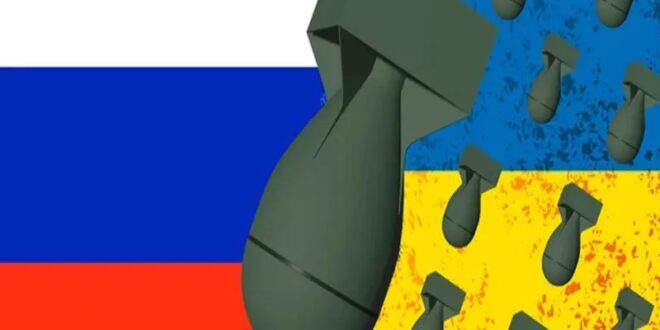Some are surprised that Russia would escalate matters at this sensitive moment in the conflict when everything is finally beginning to wind down.
The Russian Defense Ministry confirmed on Friday that it launched 50 group strikes and a massive aerial barrage against a wide array of military targets in Ukraine over the past week, including defense industry sites and depots, in what Kiev claimed was the largest such attack during the special operation thus far. This came as the front lines have largely frozen, Western support has dwindled, and leading media like the New York Times are actively debating whether peace talks should finally resume sometime soon.
Some are therefore surprised that Russia would escalate matters at this sensitive moment in the conflict when everything is finally beginning to wind down since its largest aerial barrage thus far could lend credence to those who claim that the West must support Ukraine “for as long as it takes”. The supplementary context within which this unprecedentedly large-scale attack took place helps observers better understand why Russia carried it out and what messages it sought to send by doing so.
For starters, Russia acknowledged that Ukraine damaged one of its landing ships in eastern Crimea earlier this week, which some suspect was caused by Kiev being in control of British Storm Shadow air-to-surface cruise missiles with a longer distance than previously reported. It was therefore important for Russia to respond to this escalation by its rivals in an overwhelming way in an attempt to deter them from other forthcoming ones whether with those same missiles or through whatever other means.
Second, Zelensky had recently ordered his forces to fortify the entire front after the failure of this summer’s counteroffensive, so Russia likely wanted to signal that no amount of trenches and other obstacles can impede the pace of its special operation as the Kremlin prepares for a possible offensive. Any slowdown on Russia’s side could be misinterpreted by its rivals as weakness and a willingness to freeze the conflict along the Line of Contact in spite of its three primary goals having yet to be achieved.
These are demilitarizing Ukraine, denazifying it, and restoring that country’s constitutional neutrality, which President Putin recently reaffirmed that he’d like to achieve via diplomatic means but that he won’t shy away from continuing to pursue them via military ones if that isn’t possible. He also candidly admitted during the same event that he used to be naïve about the West. Taken together, these statements form the third message that he wanted to send, namely that he isn’t a pushover.
If the front lines remained largely frozen and Russia didn’t step up its aerial assaults even if its landing ship hadn’t just been damaged, then his aforesaid admission wouldn’t have been believed by the public, who might suspect that he was lying to cover up for speculatively impending concessions for peace. These latest strikes therefore served to bolster his credibility at home in parallel with showing the West that he’s indeed serious about achieving his three primary goals one way or another no matter what.
The fourth message is that Russia wants Ukrainians to further doubt the wisdom of Zelensky’s new conscription drive and messianic delusions of maximum victory, the latter of which were disclosed in Time Magazine’s cover story last fall citing an unnamed senior aide, and thus divide society. He’s desperately trying to eschew responsibility for the counteroffensive’s failure that led to this unpopular drive, which is exacerbating preexisting tensions between him and his rivals, especially Zaluzhny.
So serious are these tensions that an expert from powerful the Atlantic Council think tank recently called on Zelensky to form a “government of national unity” in order to mitigate “justifiable public anger toward the authorities” that risks undermining his rule even more than it already has been. By showing Ukrainians that it can still strike wherever it wants at will and at an unprecedented scale in spite of their side digging in, Russia wants to encourage them and their elite to rise up against him to stop the conflict.
Finally, the last message that Russia sent through its largest aerial barrage so far is that it’s winning the “race of logistics”/“war of attrition” by such a wide margin that nothing that the West could realistically send Ukraine in the coming future will change these dynamics. Japan’s export of Patriot air defense systems to the US, which will allow the US to replace its own that it plans to then send to Ukraine, won’t make a difference, nor will whatever else the West and its vassals end up giving that country next year.
The very fact that Russia could launch such an attack 22 months into the conflict after all the air defenses that its rivals have already given Ukraine is the most compelling proof yet of its victory over NATO in the abovementioned “race”. If their aid was really as effective as their perception managers spun it as being, then this would never have happened since Russia wouldn’t waste valuable missiles and drones. Instead, it shocked and awed Ukraine and the West, which left a deep impression among both of their societies.
What just happened is a sign of what’s possibly to come if those two don’t comply with Russia’s requests for demilitarizing Ukraine, denazifying it, and restoring that country’s constitutional neutrality in exchange for it freezing the conflict the Line of Contact. As President Putin said in mid-December, “our troops have the initiative…we are doing what we consider necessary, what we want”, and this will continue from here on out until Russia’s three primary goals are achieved one way or another.
 Eurasia Press & News
Eurasia Press & News


